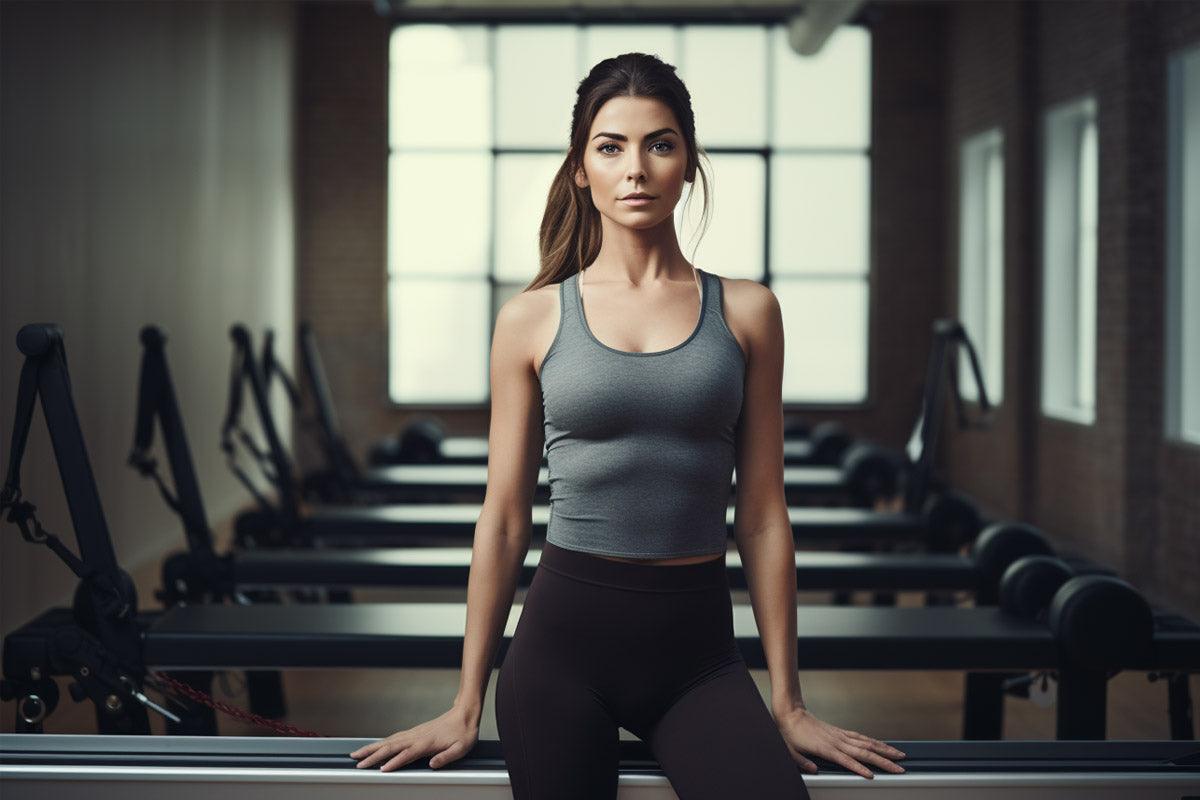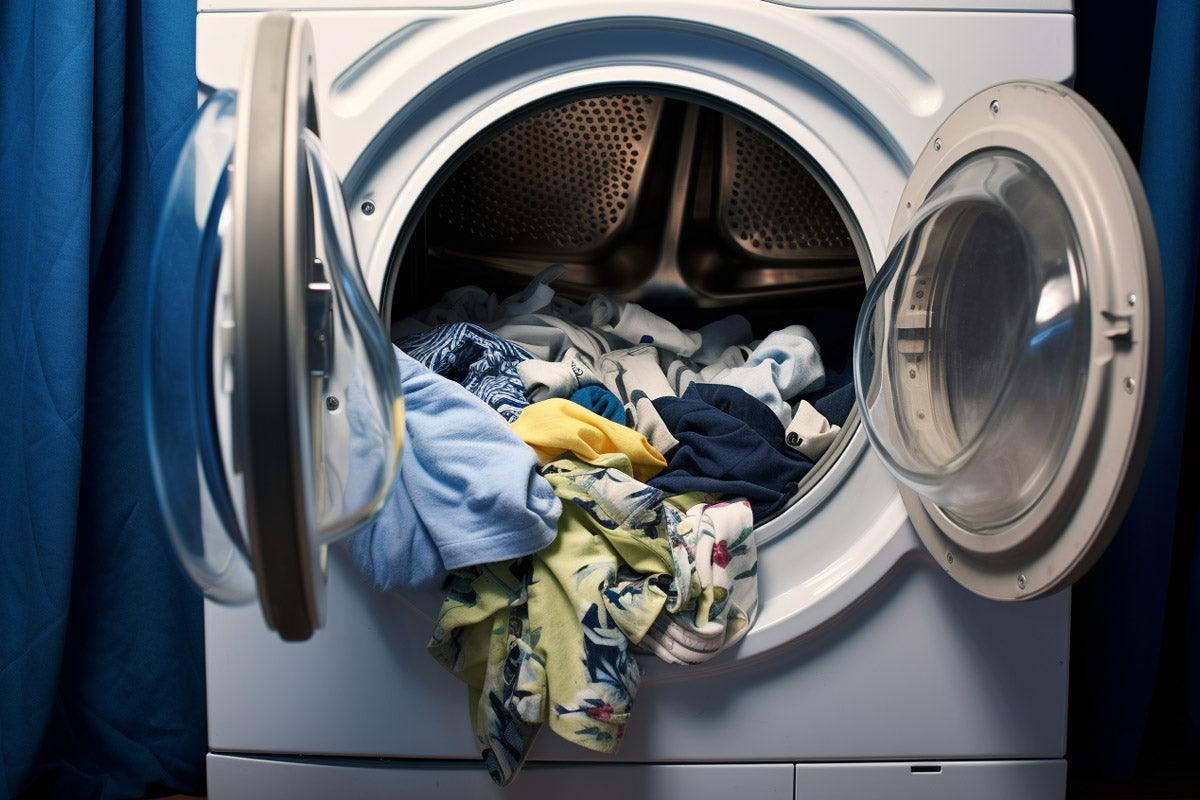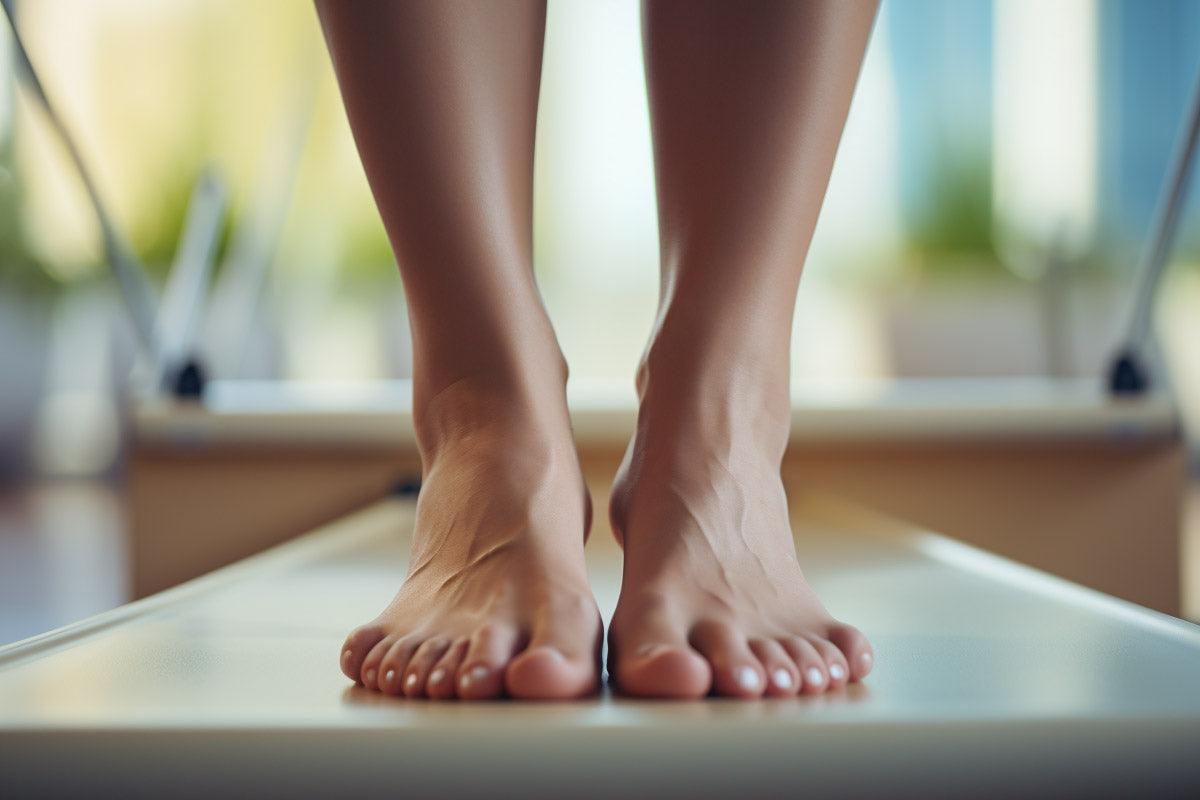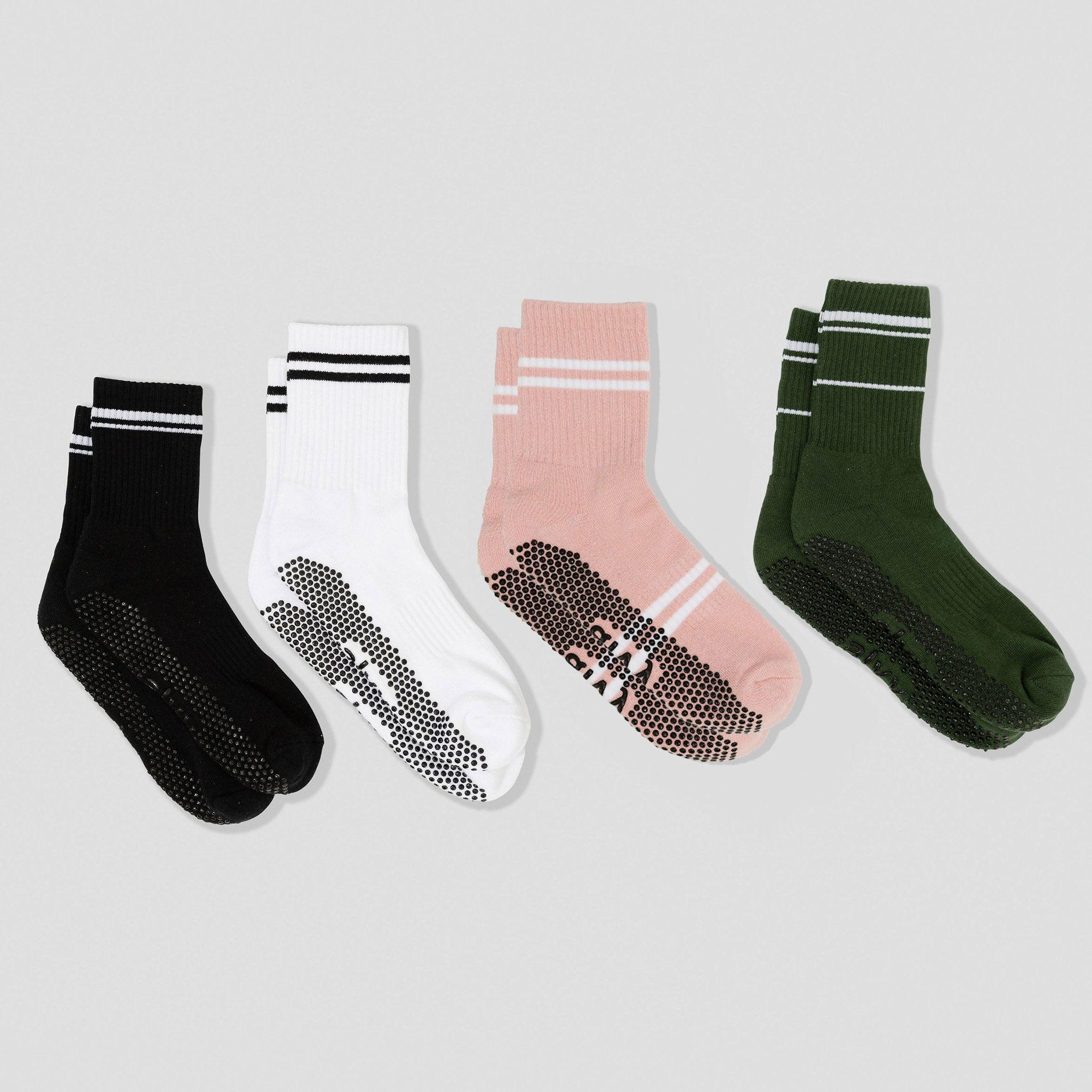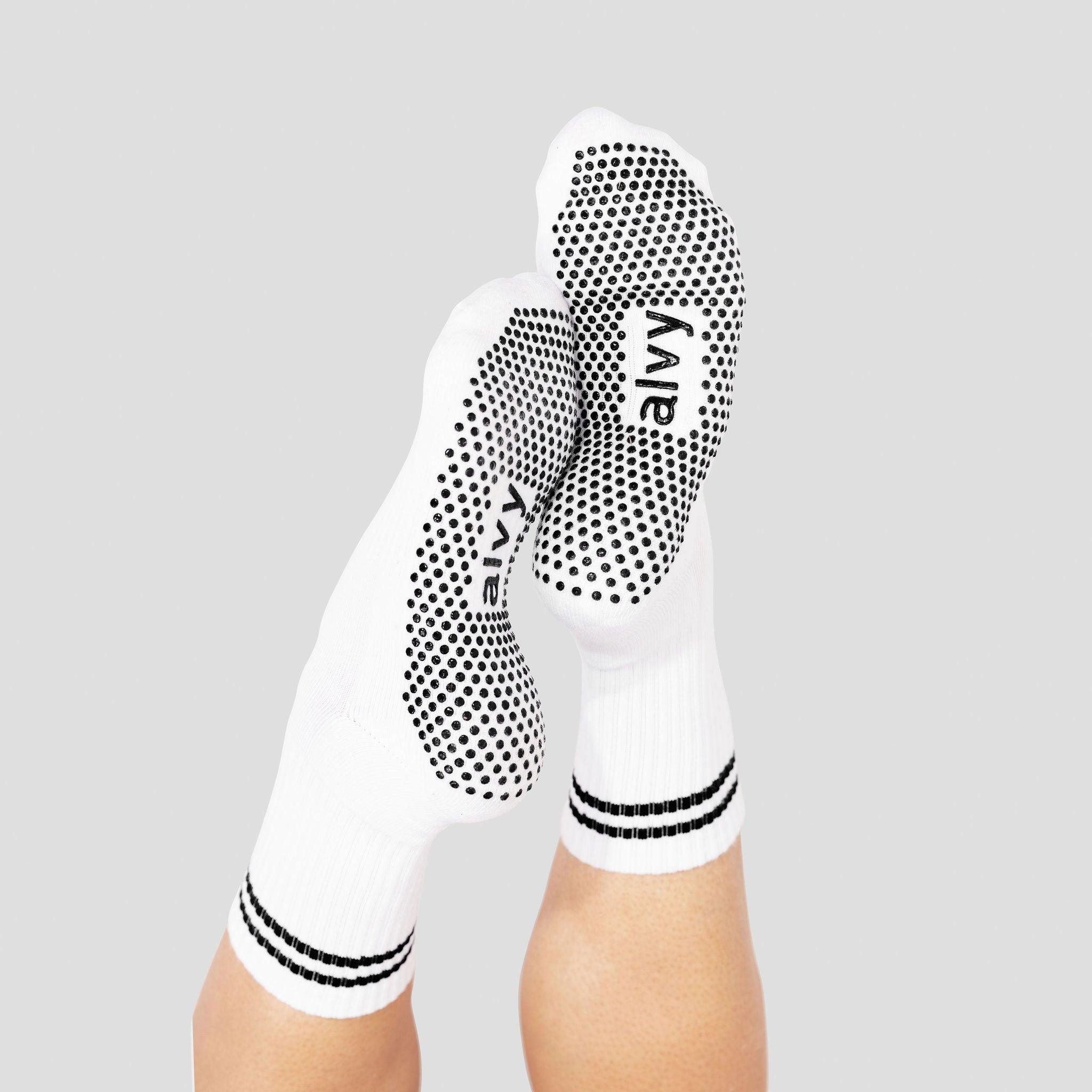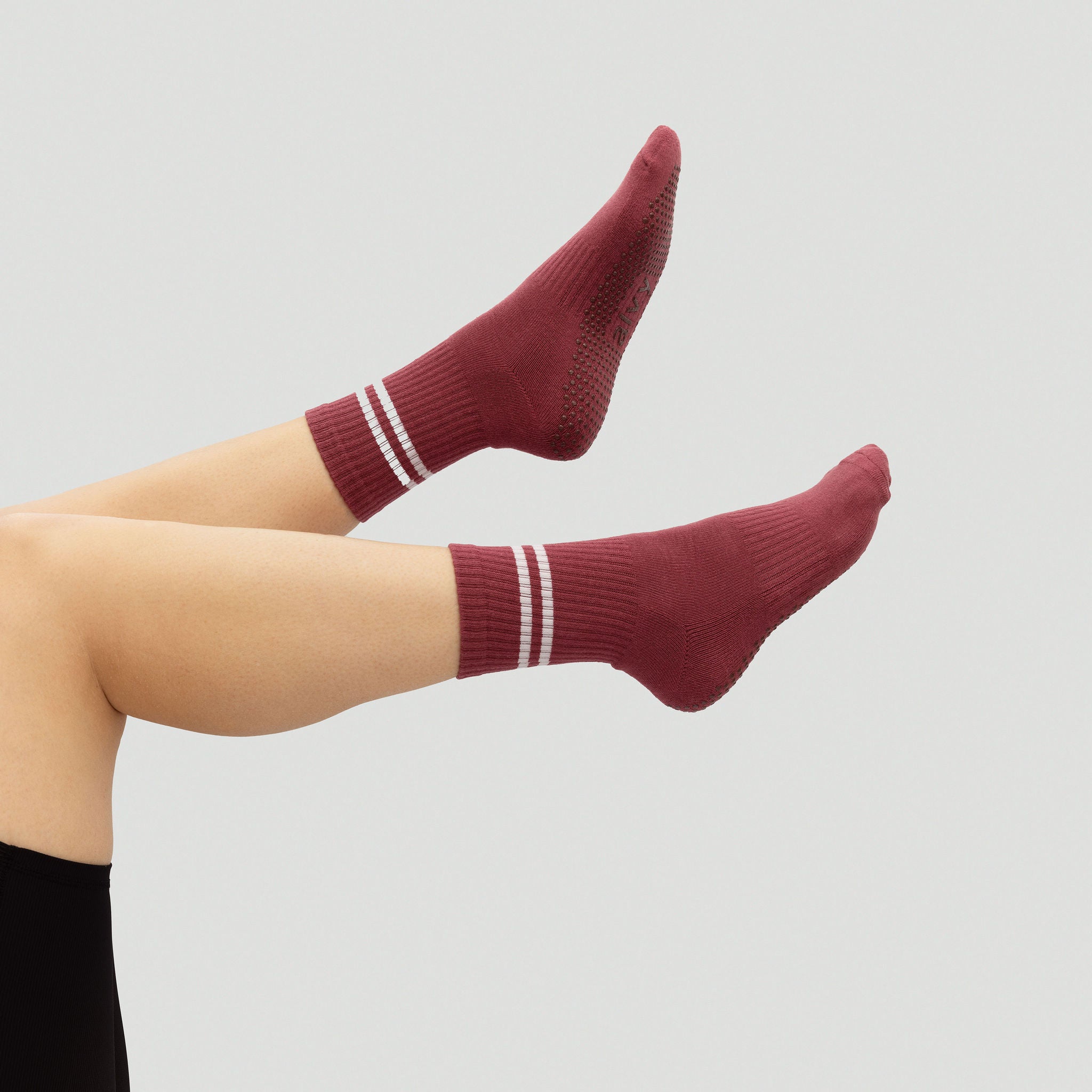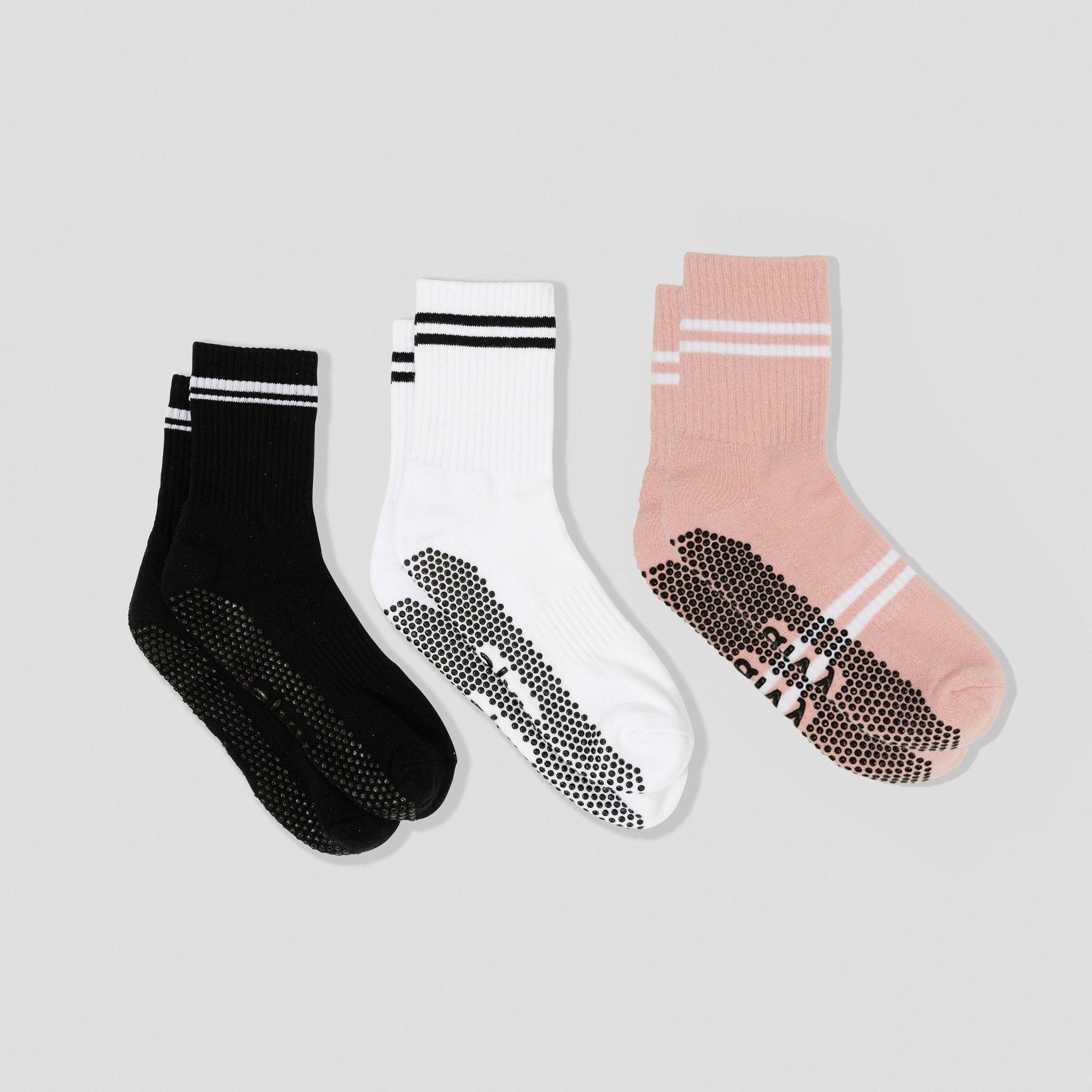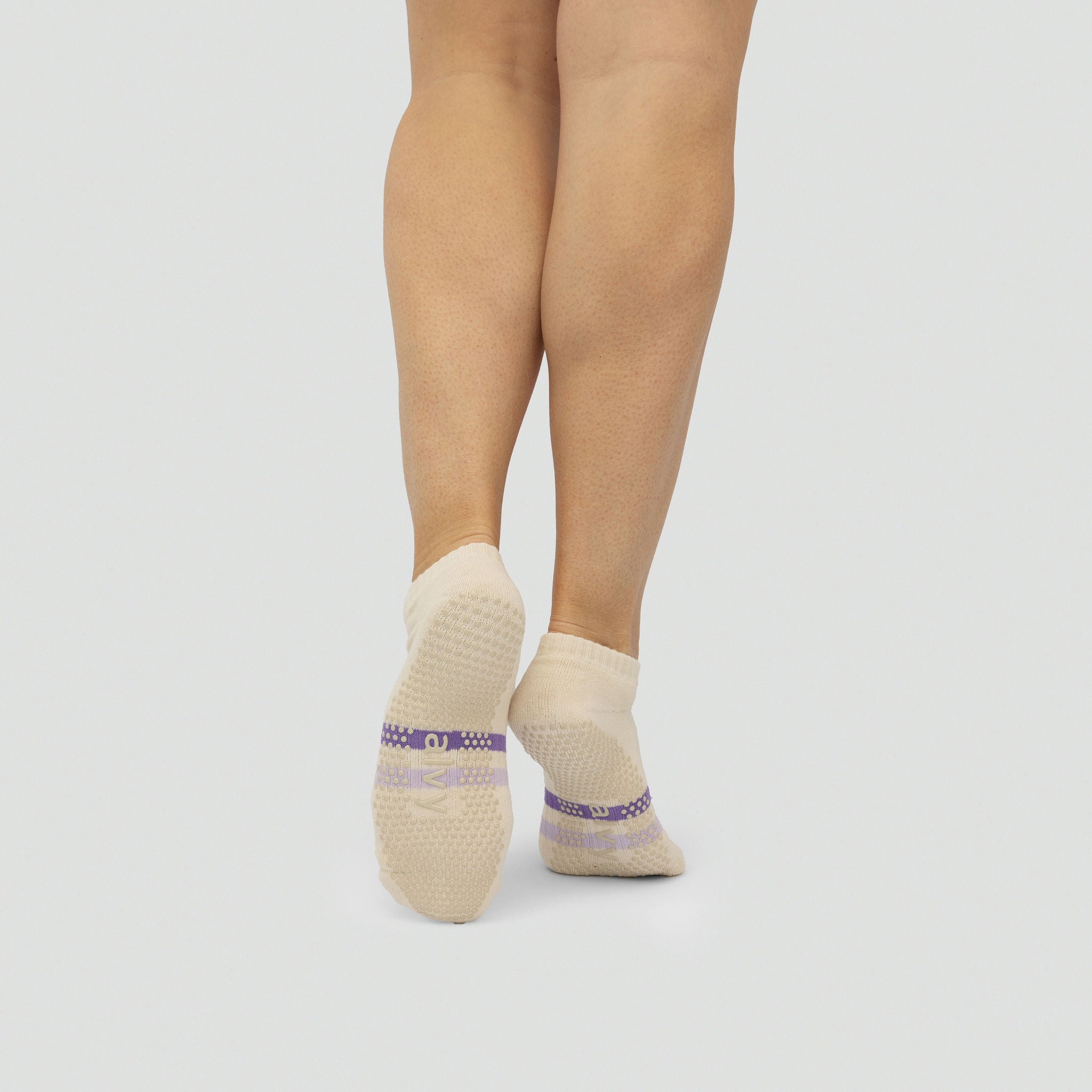In this article, we'll cover everything you need to know about Pilates clothing, from the basics to seasonal wear and accessories. Whether you're a beginner or a seasoned pro, we've got you covered. You'll learn what to wear to your first Pilates class, the essential pieces of Pilates attire, and how to choose the right footwear for Pilates. We'll also cover some frequently asked questions about Pilates clothing.
Key Takeaways
- Choose Pilates attire that allows you to move freely and provides comfort, with adequate support and coverage.
- Essential pieces of Pilates attire include leggings, sports bras, and fitted tops.
- When choosing footwear for Pilates, opt for grip socks or bare feet to ensure stability and prevent slipping.
What To Wear To Your First Pilates Class
When it comes to Pilates, wearing the right clothes can make a big difference in your workout. Here are some tips on what to wear to your first Pilates class.
- Clothing. You'll want to wear comfortable, form-fitting clothes that allow you to move freely. Loose clothing can get in the way and make it difficult for your instructor to see your alignment. Consider wearing leggings or fitted shorts, a tank top or sports bra, and a comfortable shirt or sweatshirt. Check out our list of best Pilates clothing and fashion trends in this article.
- Footwear. Most Pilates classes are done barefoot, but some people prefer to wear crew socks with grip. If you do wear socks, make sure they have a non-slip sole to prevent slipping on the equipment. Here's a list of the best Pilates socks in Australia to choose from.
- Accessories. Avoid wearing jewelry or anything that could get caught on the equipment. Hair should be tied back to prevent getting in your face during exercises.
- Materials. Look for clothes made from breathable, moisture-wicking materials that will keep you cool and dry during your workout. Avoid wearing cotton as it can become heavy and uncomfortable when wet.
Pilates Clothing Basics: What You Need To Know
Choosing the right attire is essential for a comfortable and productive Pilates workout. Here are some Pilates attire basics to help you choose the right outfit for your next class.
Comfort and Fit
Pilates requires a lot of movement and stretching, so choose clothing that fits well but is not too tight or restrictive. Slim or form-fitting tops and leggings with multi-way stretch are best, especially those made of moisture-wicking fabric that will keep you cool and dry during your workout. As for shoes, Pilates is typically done barefoot or in socks with grippy soles. Wearing shoes can hinder your ability to feel the ground and maintain proper form, so it's best to go without.
Related: Pilates do's and don't to be aware of.
Fabric Considerations
Fit and fabric quality are equally crucial when it comes to Pilates clothing. Wear apparel composed of breathable, moisture-wicking fabric to keep you dry and cool. Cotton is a common material for Pilates apparel, but if you perspire a lot, it can get bulky and uncomfortable. Since they are lightweight, elastic, and quick to dry, synthetic materials like spandex and polyester make excellent substitutes.
Furthermore, during some Pilates activities, wearing clothing with embellishments like buttons, zippers, or pockets can be painful and pierce your skin. This also applies to not donning watches, jewelry, or similar items that can be distracting (and collect sweat).
What Women Should Wear To Pilates
When it comes to Pilates reformer or mat classes, you want to wear comfortable clothing that allows you to move easily. Here are some tips on what to wear to your next Pilates class.
- Tops for support and movement. A well-fitted top is essential. Choose a Pilates top that will keep you dry and cool during your workout by being composed of breathable, moisture-wicking fabric. Your movements may be impeded by an overly loose top, and your breathing may be restricted by an overly tight top. For more support, think about tops with sports bras or built-in bras. To keep cool, you might also want to search for tops with mesh panels or openbacks.
- Leggings and Shorts. Choose shorts or leggings that are composed of a flexible, moisture-wicking material that will fit you as you move. High-waisted leggings are a popular option since they offer more covering and support. Look for styles that are fitting but not too tight if you're a fan of shorts. Too-tight shorts may limit your range of motion, while too-loose shorts may ride up during specific motions.
- Undergarments. When it comes to undergarments, comfort is key. Wearing underwear composed of fabric that wicks away sweat will keep you dry and cool. Steer clear of underwear that has tags or seams that could irritate your skin. Wearing a sports bra or a bra with a built-in shelf bra—or one specifically made for low-impact exercises like Pilates (or even Yoga)—will provide you with extra support.
What Men Should Wear To Pilates
Men have a variety of clothing options that are both comfortable and functional. Here are some tips on what to wear to your next Pilates class.
- Shirts and Tanks. It's a good idea to wear a shirt that is loose-fitting and comfy for Pilates. Shirts composed of materials that breathe, such spandex, cotton, or bamboo are good choices. Shirts with buttons or zippers should be avoided because they may obstruct specific workouts. Men also tend to wear tank tops when doing Pilates. Choose a tank top that fits snugly because too-loose clothing can obstruct certain movements. A well-fitting tank top composed of elastic materials like spandex is a wise option.
- Shorts and Trousers. Shorts and pants should fit comfortably and provide ample range of motion when starting Pilates. Look for shorts or pants composed of pliable materials like polyester or spandex. Mid-thigh or just above the knee is a decent length for men who like shorts. Avoid wearing too-loose shorts because they can get in the way of some workouts. A nice option is a fitting pair of shorts made of a stretchy material like spandex.
Footwear for Pilates
When it comes to Pilates, it is recommended to practice barefoot or wear socks with grips. Shoes are not necessary as they can hinder your ability to properly execute the exercises.
- Barefoot. While practicing Pilates barefoot is the most common option, wearing socks with grips can be beneficial. Pilates socks are designed with special grips on the soles to provide traction on the mat or reformer machine, improving balance and stability. They also help to avoid slipping on the mat, which can be especially important during exercises that involve lifting or balancing.
- Grip socks. If you prefer wearing socks, look for ones that are specifically designed for Pilates and have non-slip grips on the bottom. It is important to note that regular socks can be slippery and may not provide enough traction compared to grip socks, which can increase the risk of injury. Here are some of our fan-favourite nonslip socks:
Seasonal Pilates Wear
The type of Pilates clothing you wear can vary depending on the season. Here are some suggestions for Pilates wear during different seasons:
Summer Attire
During the Australian summer season, it's crucial to wear lightweight and breathable clothing that can wick away sweat and keep you cool. Opt for clothing made of moisture-wicking fabric, such as nylon or polyester. Avoid wearing cotton clothes as they can absorb sweat and become heavy and uncomfortable.
A few summer Pilates wear options include:
- Tank tops or sports bras made of moisture-wicking fabric
- Shorts or leggings made of stretchy and breathable material
- Lightweight and comfortable sneakers or Pilates socks
Winter Attire
In winter, it's important to wear warm clothing that can keep you comfortable during the cold weather. However, you don't want to wear clothes that are too bulky or restrictive, as it can hinder your movements during Pilates.
Here are some winter Pilates wear options:
- Long-sleeved tops made of moisture-wicking fabric
- Leggings made of thicker and warmer material
- Pilates socks or shoes with non-slip soles to keep your feet warm and prevent slipping
- A light jacket or sweater that you can easily take off if you get too warm during the workout
Accessories and Equipment
Having the right Pilates accessories and equipment can make a big difference in your Pilates workout. Here are some essential items to consider and purchase:
- Headbands and Wristbands. Sweat can be an annoying distraction during a Pilates lesson. Think about donning a headband and bracelets to keep it out of your hands and out of your eyes. They can provide your workout attire with a fashionable touch in addition to their functional use.
- Pilates Mats and Props. For floor workouts, a Pilates mat is a must-have since it offers a cosy and stable surface to work on. Choose a matting that is sufficiently thick to provide joint support without being excessively heavy to move. To spice up your exercises and push your muscles in new ways, you might also want to invest in some props, such as a foam roller or a Pilates ring.

Frequently Asked Questions
What are the top clothing brands recommended for Pilates?
Some popular brands that offer comfortable and stylish Pilates clothing include Lululemon, Athleta, Alo Yoga, and of course, ALVY. However, keep in mind that you don't necessarily need to spend a lot of money on branded clothing. You can also find affordable and comfortable Pilates clothing at stores like Target and Old Navy.
Related: Are Target grip socks worth it?
Are there specific outfit sets considered ideal for Pilates sessions?
It is recommended to wear form-fitting clothing that permits unfettered mobility, even though there are no particular clothing combinations that are thought to be perfect for Pilates sessions. A lot of individuals like to pair yoga pants or leggings with a sports bra or tank top. Wearing clothes that wick away sweat will also help you stay dry and cool while working out.
What essentials should one bring to a Pilates reformer class?
When attending a Pilates reformer class, it's important to bring a few essentials. These include a water bottle to stay hydrated, a towel to wipe away sweat, and a mat to provide extra cushioning on the reformer. Some people also prefer to bring grip socks to provide traction on the reformer surface.
Are gym shoes necessary for Pilates, or is it practiced barefoot?
Pilates is typically practiced barefoot to allow for better grip and control during exercises. However, some people may prefer to wear grip socks or lightweight shoes for added support and comfort. If you do choose to wear shoes, make sure they are lightweight and flexible to allow for a full range of motion.

